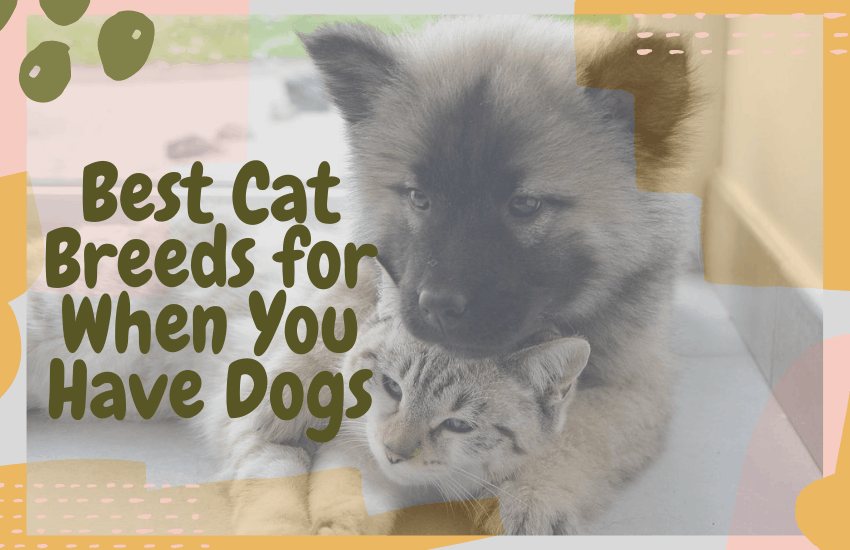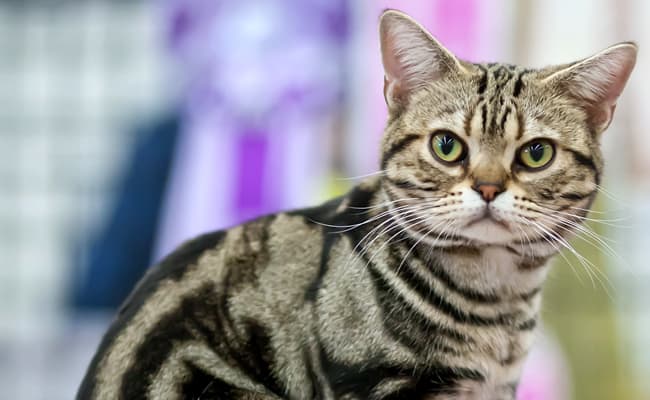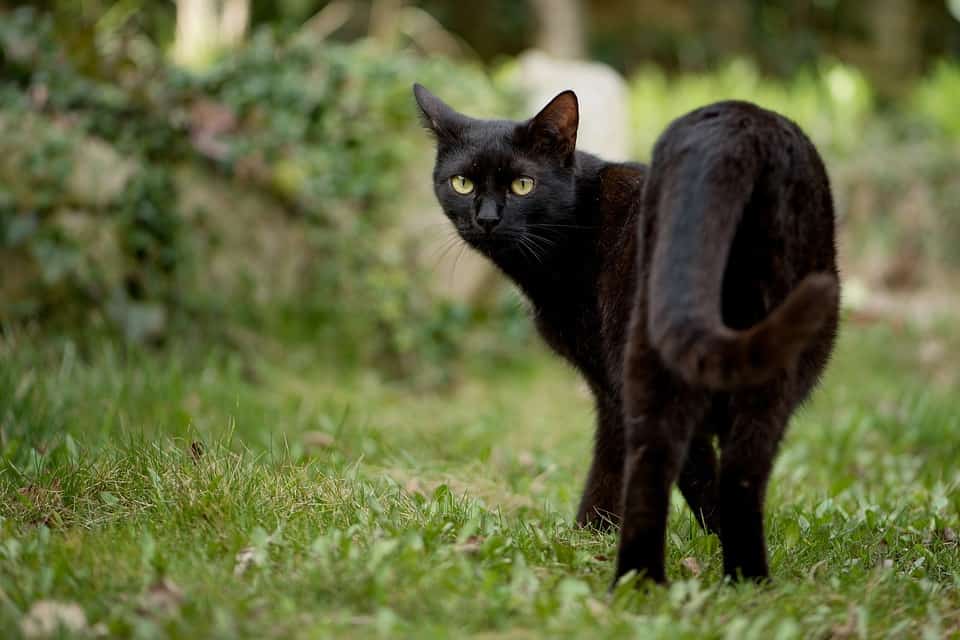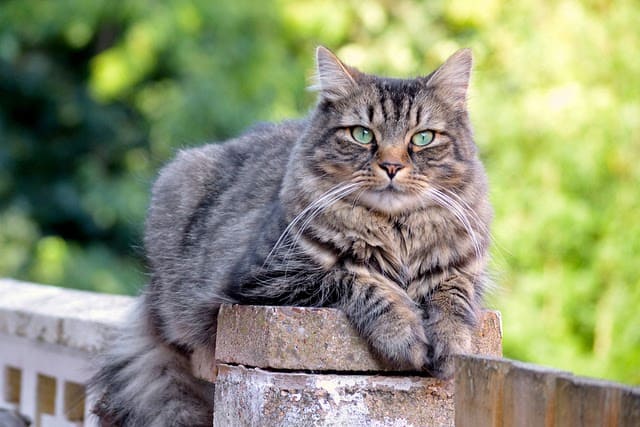
Cat and dogs have an interesting relationship. Contrary to popular belief, cats are very social animals and can actually get along quite well with most dogs. While you need to consider the personality and temperament of each cat individually before you bring them into a dog-friendly home, there are several breeds that have been known to get along well with dogs.
It is important to follow proper introduction rules when you bring a new feline friend into your home so it makes the transition smoother for all cats and dogs involved as well as save yourself some stress!
In this article, we will learn about a few dog-friendly cat breeds and what makes them a good match to be around dogs and also explore some tips on how to introduce your new kitty to the dog in your home.

Table of Contents
Top 10 Cat Breeds for Dog-friendly Homes
American Shorthair
The American Shorthair is a gentle cat that would do well with a dog once you have set proper boundaries. Although quiet, this kitty is very intelligent, really interested in their surroundings, and enjoys interacting with dogs and humans alike. They prefer to watch birds and other animals from a window perch.

Bombay
Bombay cats enjoy all kinds of games. They are very affectionate cats and become quite attached to their humans and dog friends. Bombays seek attention and do not like to be left alone for long periods of time. They have a very distinct purr and are known to be quite vocal.

Abyssinian
Abyssinians are very social cats. They have been known to get along well with most species. They are very playful and active so they would make a great addition to a home with an active dog. These cats have a curious intelligence and enjoy being showered with attention.
Birman
This quiet cat is a gentle being, however, don’t confuse the gentleness for timidness. Birmans are active and enjoy playtime with their humans and dog friends. Their favorite game to play is fetch.
Japanese Bobtail
The Japanese Bobtail is another breed that enjoys going for walks on a leash. They have a very sweet and affectionate temperament and would do well in a household with dogs. These cats are very smart and are full of energy and mischief.
Ragdoll
Ragdolls are one of the most gentle breeds of cats. They got their name because they have the tendency to go limp when they are picked up. Ragdolls get along well with all pets. They are also known to be big goofballs and enjoy lots of play time.
Maine Coon
We all love Maine coons right? They are big, fluffy and gentle. Maine Coons are known to portray dog-like behavior themselves as they would follow their owners from room to room. They have above average intelligence which makes them easy to train.
Norwegian Forest Cat
The Norwegian Forest Cat has a muscular frame that helps them to stand up for themselves and set limits between them and their doggy friends. Once they have boundaries set, they will play and enjoy the company of their canine counterparts.
Siberian
These extremely playful cats are very curious. They love adventure and really enjoy interacting with humans and dogs alike. Siberians are affectionate and will show their love in playful ways.
Tonkinese
The Tonkinese are full of love and affection. They like to seek out the company of their family and have been known to run amongst their canine friends and play fetch with them. They are active, vocal, and enjoy jumping to great heights.
Tips for Introducing Your New Cat to Your Dog
The good news is that cat to dog introductions tend to be less stressful than cat to cat introductions. It is important to start out by keeping the pets separate for at least a week. Feeding them on opposite sides of a closed door helps the pets familiarize themselves with each other’s smell.
For their first face-to-face interaction, keep the dog on a leash or in a crate. This will let the cat dictate the introduction and also protect the cat if the dog has any strong hunting or chasing instincts.
Make sure that the cat has a safe place to retreat to and always reward the dog for being gentle and non-aggressive. It goes without saying that you need to closely supervise any interaction between the pets. Once you let the pets sniff each other over a few days and depending on how it goes, you can determine how the pets will act around each other unsupervised.
One thing to keep in mind is that not all dog breeds react well to living with a cat. It is just nature. Do your research on your dog as well as your new cat before you decide to introduce them into your family. You may have to repeat the introduction process over if you find that initial introductions are just not working well.
You can use food as a reinforcing treat. Do not scold or punish the dog as this will just create a negative experience. Keep their food separate from each other and keep the dog away from the cat’s litter box area. Remember, this is a new and rather stressful time for both animals. Use soothing voices and give lots of love and attention.
When pets don’t get along, it can cause tremendous stress on the owners as well as the pets themselves. Once you have gotten past the introductory phase, it is important to know that you will still need patience, time, and some work to keep the peace amongst the pets.
Make sure that your new cat doesn’t feel threatened or cornered by the resident dog(s). If you feel that your cat or dog is becoming overly stressed, you can try calming aids for cats or calming aids for dogs.
They may become fast friends or just learn to tolerate each other. Either way, don’t force it and let them get acquainted in their own time. This will help things go smoothly.
Want useful tips, tricks, and gear for life with a canine companion? Visit our sister site, Scout Knows.









Leave a Reply